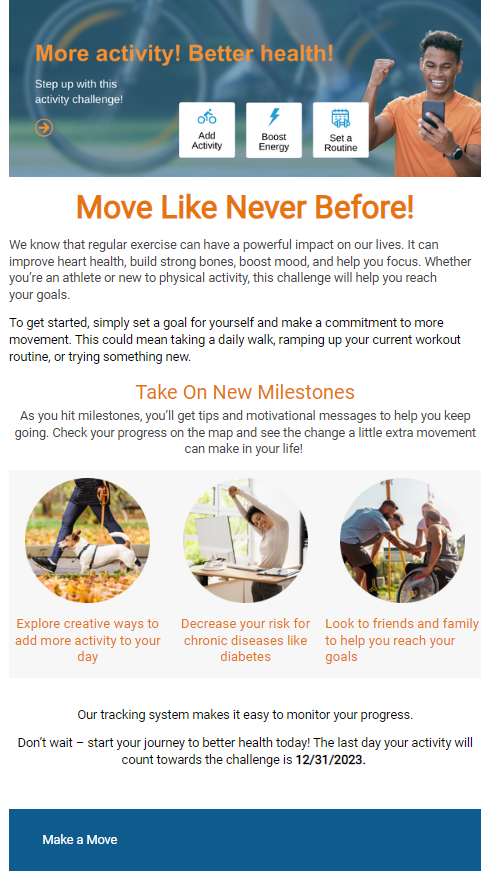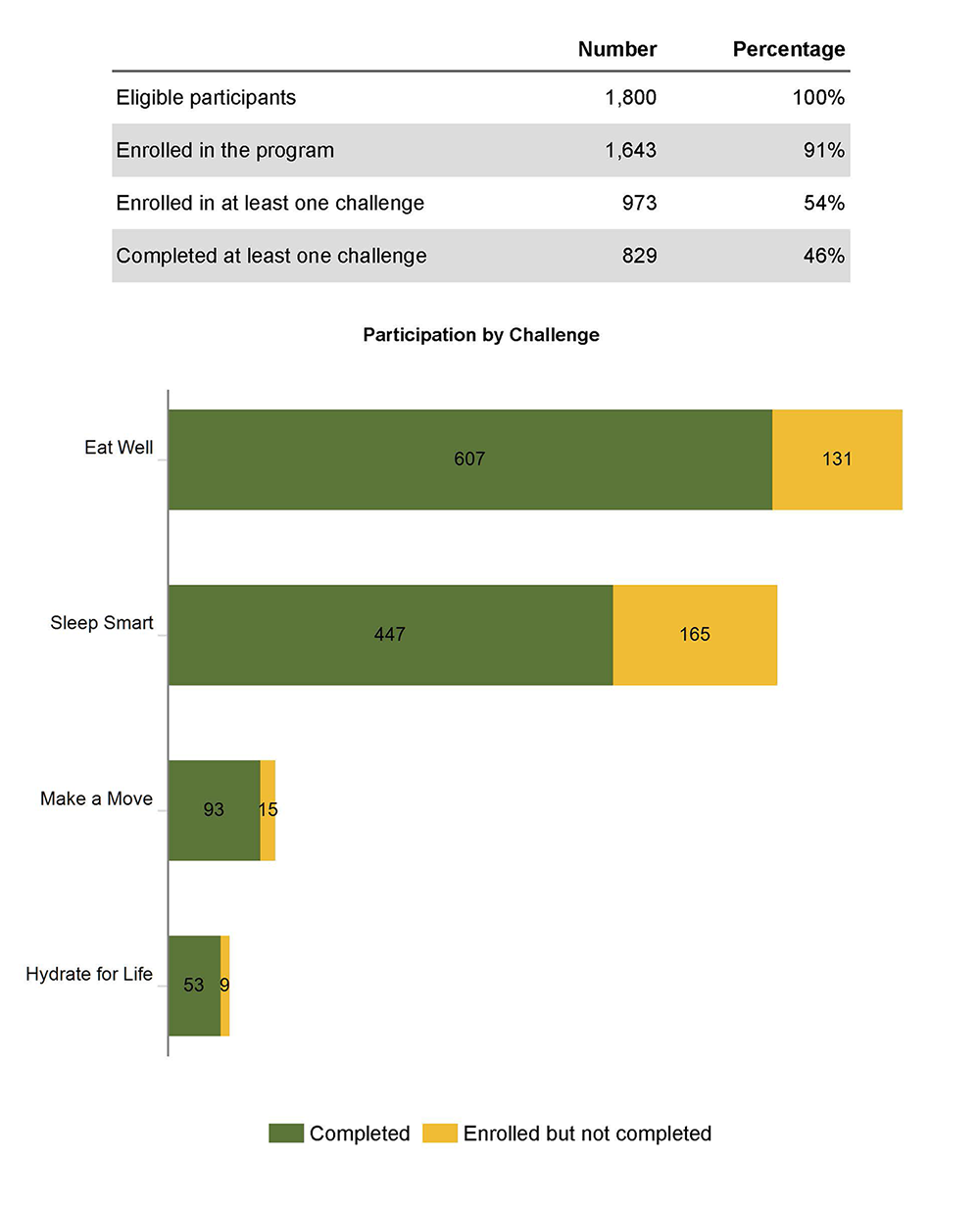10 Tips for Successful Wellness Challenges

Wellness Challenges can help foster sustainable behavior change. Achieving high participation rates and creating meaningful change requires careful preparation and thoughtful consideration from the start of planning through implementation. Here are 10 tips to help you craft a successful challenge that will engage your participants and lead them on the journey toward greater health and well-being.
1. Understand Your Members
Determine what challenges will be the most successful by understanding your current population. Analyze the results of your health assessment aggregate data and conduct interest surveys while diving into past data to identify what did or did not work in previous years.
In 2022, our most popular challenges were Make a Move encouraging active lifestyles; Hydrate for Life, promoting healthy hydration habits; Sleep Smart helping to ensure quality restorative sleep; and Relax & Revive, offering guidance in relaxation techniques.
2. Define Clear Goals and Objectives
Establish SMART goals: Specific, Measurable, Achievable, Relevant, and Time-Bound for the wellness challenge to provide direction and focus. Goals can empower participants in their challenges by providing clear, obtainable objectives and a means of tracking progress over time.
Examples could be aiming to drink 6-8 8oz glasses of water daily for 30 days or improving sleeping habits by getting 6-8 hours of sleep each night for two weeks. Communicating the challenge’s objectives will help participants understand the purpose of the challenge and stay motivated throughout.
3. Communicate Regularly
Communicating goals and keeping participants informed is key in any challenge. Program coordinators and wellness champions should create a multi-channel communication campaign to reach both inside and outside the application using digital and print materials. Program coordinators and wellness champions should utilize emails, flyers, and mailers. Integrating social media pages dedicated to the challenge or program adds an extra layer of social support by providing progress updates, tips, and success stories.
An effective communication plan includes reminders for upcoming dates, celebratory messages to reflect on progress, nudges for inactivity, and messages to coordinate teams and peer groups.
Sample Challenge Message

4. Make it Fun
Make the challenge interactive and enjoyable by incorporating games, rewards, and friendly competition. This can help create a positive and motivating environment for participants to engage in healthy behaviors.
5. Connect Wearables
Offer multiple ways to track progress, including manual logging of activity and auto logging activity through wearables. Utilize technology to create a seamless participant experience, such as fitness device connectivity to make tracking easier. Technology can help streamline the challenge and make it easier for participants to track their progress.
Our most connected fitness devices and apps for 2022 were Apple HealthKit (40%), Fitbit (30%), and Google Fit (10%).
6. Encourage Teamwork
Encourage teamwork by forming groups, organizing team events, and recognizing team accomplishments. This can help create a sense of community and foster friendly competition, motivating participants to continue engaging in healthy behaviors. Highlight team rankings with a leaderboard.
7. Offer Incentives
Offer incentives for participation and achievement to motivate and reward participants and top-performing teams. Incentives can range from small prizes to more significant rewards, such as extra time off or a bonus.
We recommend smaller incentives for reaching each goal and an even greater incentive for completing the overall challenge to motivate participants from start to finish.
8. Incorporate Local Elements
It is essential to make challenges as engaging and relevant as possible for the participants. One way to do this is by incorporating local information, activities, and resources into the challenge. Focusing on regional aspects makes the challenge more personal and relatable to the users, making it more likely that they will stick with it.
For example, a physical activity challenge could be designed with a route that takes participants through different areas of their town, highlighting local landmarks and attractions.
9. Provide Resources and Support
Provide resources to help participants succeed, such as educational materials, online resources, and access to wellness professionals. Resources and support will help participants feel supported and confident in their ability to achieve their goals.
10. Evaluate and Adjust
Continuously evaluate the challenge’s success and adapt to ensure its continued success and relevance. Collecting participant feedback, analyzing the collected data, and making improvements will help ensure the challenge remains effective and engaging.
Keeping track of participation and completion rates can provide key insights into a challenge’s success. Team and individual progress reports also help to identify top-performing individuals, while cross-analysis of multiple challenges uncovers which topics yielded the best results.
Sample Report

A successful wellness challenge requires careful planning and execution. The ten tips mentioned above are designed to increase participation rates and ensure participants feel supported and motivated to achieve their goals.

